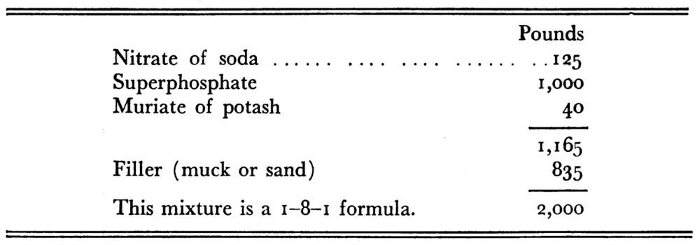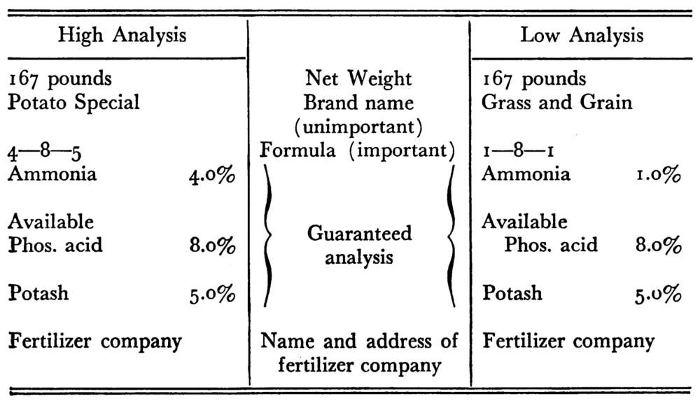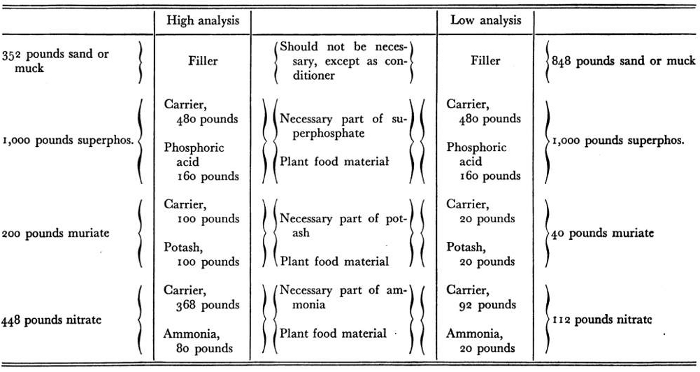The following information n fertilizer mixtures comes from Five Acres and Independence by M. G. Kains. Five Acres and Independence is also available to purchase in print.
Fertilizer Mixtures
[The diagram, tables and paragraphs have been condensed from Maryland Experiment Station Bulletin, written by A. G. McCall. (See Chapter 25).]
It is important to understand the distinction between a carrier (without which no fertilizer can be mixed) and a filler or make-weight which may or may not be necessary. In every case the carrier IS a necessary part of the mixture since all three of the plant food elements must be combined with some other material before they can be handled or stored. For example both nitrogen and ammonia in their pure form are gases which must be absorbed and combined with some other substance before they can be used in a fertilizer mixture.
Every farmer is familiar with the odor of ammonia which he smells on entering a horse stable after it has been closed over night. This is from the ammonia gas being given into the air from the manure. When land plaster (gypsum) is sprinkled over the floors a part of the ammonia is absorbed and may be handled with the manure, in which case the gypsum is the carrier. So likewise of other plant food elements, potash and phosphorus.
The amount of inactive material in a fertilizer depends both upon the analysis or percentage composition and upon the character of the material from which the mixture is made. A high analysis fertilizer (Table 9) might be made up as shown under formula A.
Table 9
Fertilizer Formulas
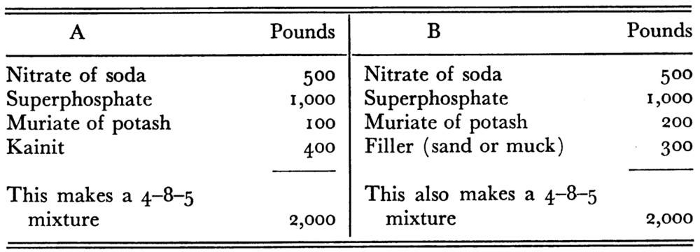
If stored, especially in a damp place, fertilizer A would cake, so the lumps would have to be broken and screened before using. To avoid this the same formula may be made of slightly different materials and a few pounds of filler added to preserve a good physical condition, as shown in formula B.
The manufacturer might also use sulphate of ammonia, tankage or fish scrap or some combination of these materials as the sources of nitrogen. Instead of deriving all the phosphorus from superphosphate he might use some bone or tankage to supplement the superphosphate, and wood ashes as the source of part of the potash. In high analysis fertilizers, therefore, it is necessary to use such filler to insure a good physical condition.
Table 10
Composition of Materials Used in Mixing Fertilizers
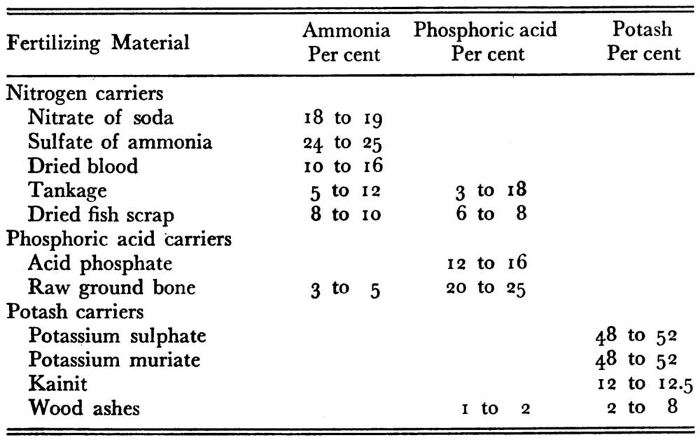
Table 11
Percentage Amounts of Basic Materials to Use in Mixing Fertilizer
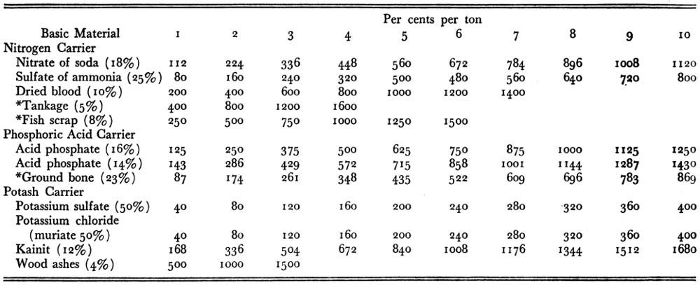
Table 12
The fertilizer ingredients in this low grade formula are all high grade, but in compounding the low analysis brand it is necessary to use an excessively large amount of make-weight filler. On this make-weight stuff the buyer must pay freight, cartage and the cost of application to his crop. It does neither him nor his crop any good, so it does not pay him to handle it.
The amount of filler might be reduced in this case by using tankage or fish scrap for the nitrogen carrier and kainit instead of muriate as the potash carrier but this would not increase the amount of plant food in the fertilizer. In this case the additional weight of inactive material would be in the form of a carrier instead of a filler.
